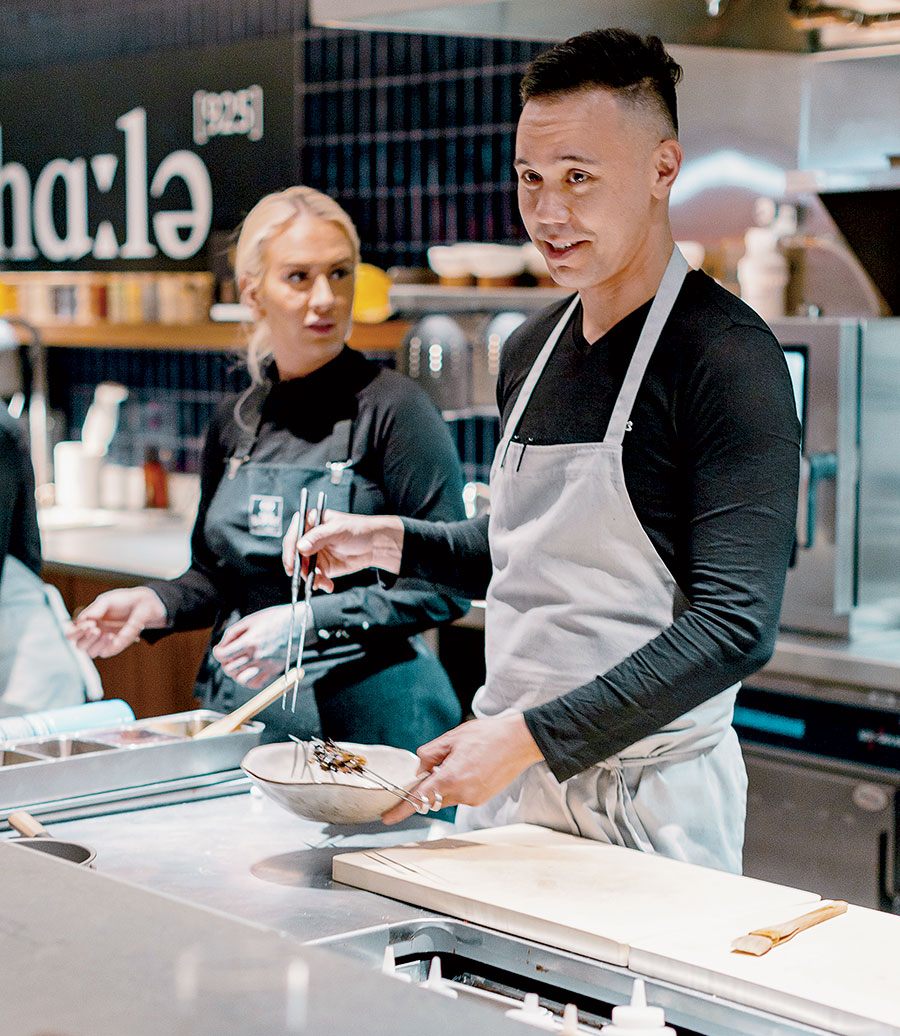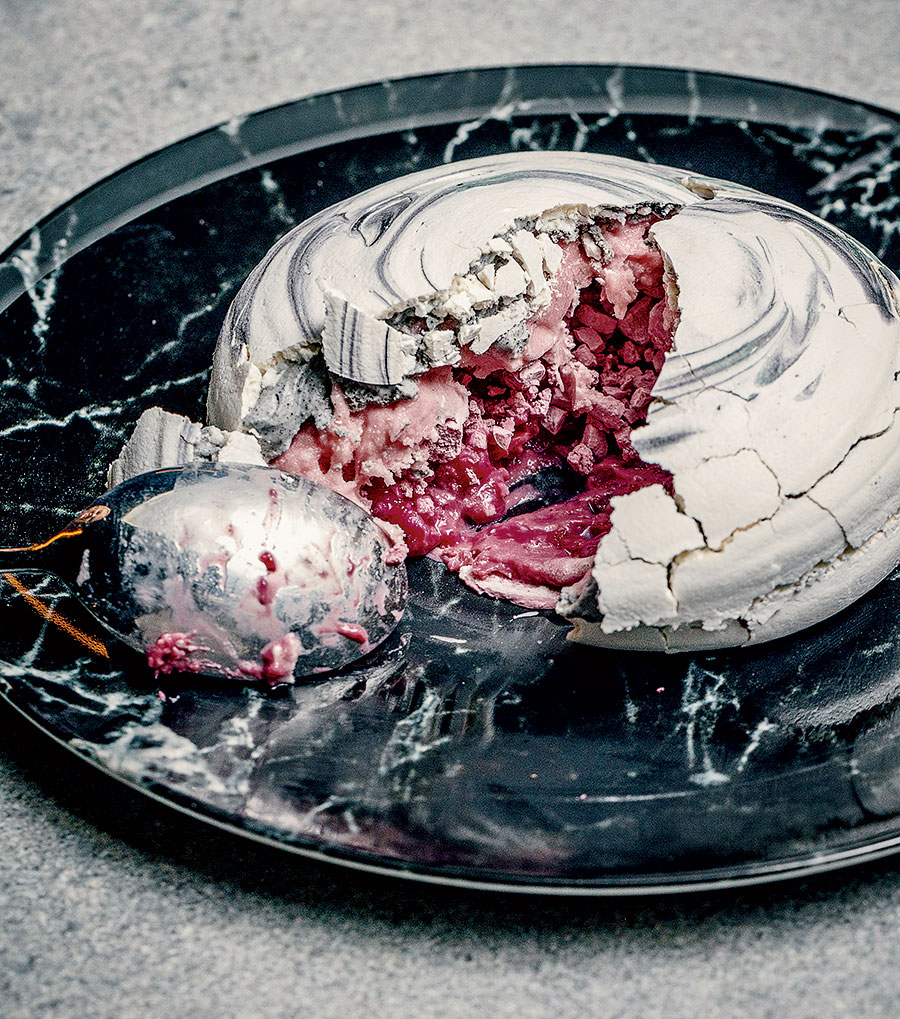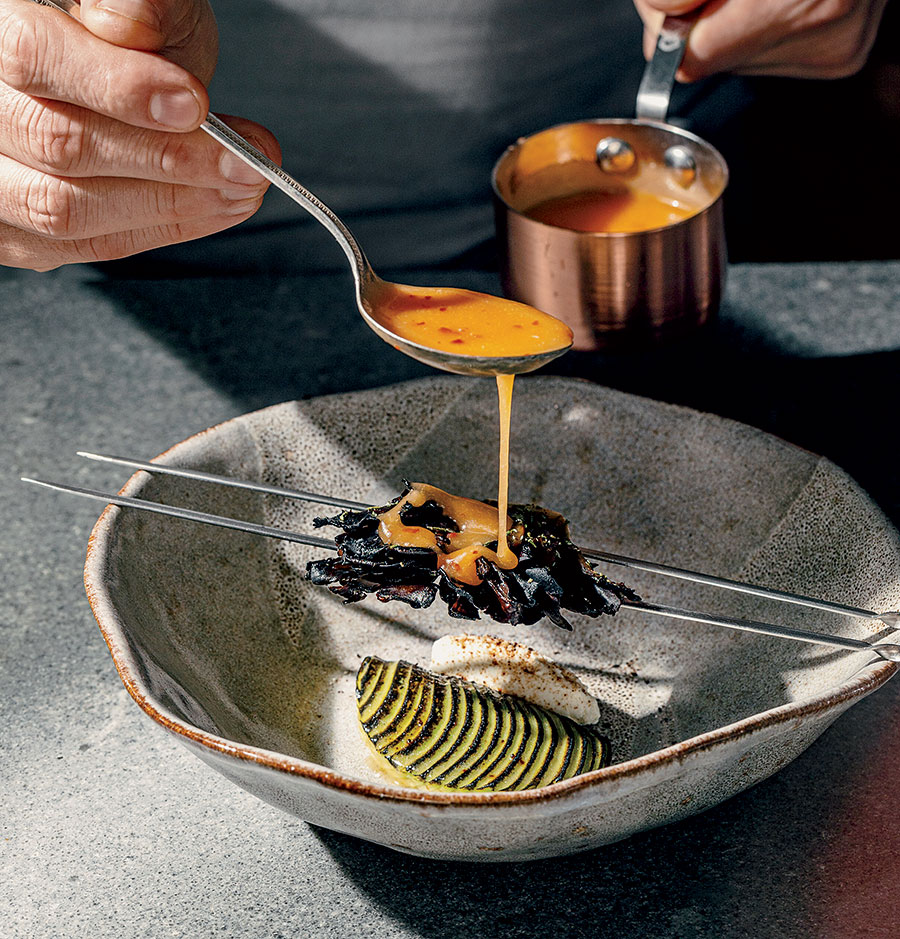When the influential Copenhagen restaurant Noma announced in January that it would stop serving paying guests next year and turn into a food lab in 2025, folks were split. Food writers and some diners argued the closure portended a paradigm shift away from tweezer food and endless tasting menus. Such dinners, they said, demand too much on the part of guests: too much time, money, planning, and patience. Restaurant workers, on the other hand, focused on the shittiness of the jobs. To keep the cost of a meal down to the mere hundreds of dollars, places like Noma rely on the labor of under- or unpaid cooks who weather verbal abuse and long days of menial, repetitive labor to buff their résumés.
The fallout from these conversations will certainly be felt here. Few cities are as invested in ultrapremium dining as ours. Since I began reviewing restaurants for this magazine nearly a year ago, I’ve been gobsmacked by how much of the city’s talent sequesters itself inside the world of expensive tasting-menu restaurants that only rich Michelin-star hunters and worshipful foodies have much appetite for.
But what of Valhalla, an unlikely fine-dining venue that opened in September in a corner of the mezzanine overlooking Time Out Market food hall? When word went out that its chef-owner, Stephen Gillanders (S.K.Y., Apolonia), would be serving a $185 tasting menu, my first thought was: Pass. Chicago doesn’t need another one of those. Yet unlike many other tasting-menu restaurants, Valhalla offers an à la carte option. This lured me in, and I’m glad it did — Gillanders is cooking in a way I never could have foreseen from his previous work, and in my opinion, he’s turning out the most exciting new food in Chicago.

Yet as Gillanders himself noted in an interview, “This restaurant is weird.” To find it, you’ll need to venture through the crowded, noisy, fryer-oil-fragrant food hall in search of stairs. Once you’re up on the mostly vacant mezzanine, look for Valhalla’s sign. There is an open kitchen surrounded by an eating bar, and a barely furnished dining room that reminds me of the quiet upstairs corner of my college library, where I used to study when I was too busy to socialize.
The counter is the best place to sit. It’s where Gillanders cooks and plates his dishes with precision but no tweezered herbs. Instead, he helps the ingredients taste intensely of themselves. A lot of confiting and emulsifying goes into his maitake kebab, but what we taste is the way these mushroom clusters hit the tongue with their crisp, fluttery caps and silky flesh.
Gillanders opened more than a dozen restaurants for Jean-Georges Vongerichten, and I see Vongerichten’s teachings in the way he uses bright colors and varied cooking methods on one plate to bring juxtaposing flavors into focus. The Lamb Chop 4.0 is like a Scotch egg made with rosy meat wrapped in crisp-fried sausage. With each forkful, stab a piece of fried purple cauliflower, swipe it through the tomato curry sauce, and daub it with ginger relish for the perfect bite.
I admire the way Gillanders understands temperature. Ice-cold cured fluke in a bracing vinaigrette with sour apple matchsticks and pine nuts comes into focus as it warms on the tongue. Mozzarella surrounds a heart of eggplant relish and arrives warm from having been pulled to order in boiling water. At this temperature, you can experience the tension of snap and creaminess in the freshly made cheese.
Most impressive is Gillanders’s first attempt of his career at interpreting his Filipina mother’s cooking. In his hands, crab arroz caldo becomes a kind of congee with a steamy heat that catches in the back of the throat before releasing waves of flavor — lime, chile, fennel, and sweet, sweet crab. My daughter and I took turns spooning it up, letting each bite tell its story. What magic.

The food here can also be just plain fun, which stands in stark contrast to the twee whimsy (“This is Chef’s take on a favorite childhood memory”) at many Chicago restaurants. Begin with a glass of Champagne and a delightful assortment of savory pastries, each a doppelgänger for a cinnamon roll or madeleine but tasting of truffle or scallion. If it’s on special, order the crisp-gooey fried mochi stuffed with cheese curds onto which Gillanders grates 10 grams of black truffle. He understands the Tuber melanosporum paradox: To appreciate its natural flavor, you need to wallow in it. Gillanders claims he loses a few bucks with each serving but that seeing his guests react is worth it.
I tried the tasting menu one evening, along with one of sommelier Jelena Prodan’s three pairings, which balanced classic varietal expressions and offbeat ringers that didn’t slip too far down the natural wine rabbit hole. The meal was filled with courses that made me stop and pay attention. But Gillanders’s food comes across better without all the extras, and the dishes that straddle both menus show better in larger portions (not to mention, it’s much more affordable to opt for à la carte). Same goes for crack pastry chef Tatum Sinclair, who serves fun one-bites on the tasting menu but has a genius black-and-white Pavlova dome to order à la carte. You smash it open to reveal all kinds of fresh, frozen, creamy, and puddingy fruit flavors, and it is a dessert to fight over.
Whichever side of the menu you go for, notice that everyone working in the kitchen and on the floor signs it. More than a friendly gesture, this detail shows off what appears to be a genuine esprit de corps among the staff. I could be totally wrong, but my senses and observations tell me this is a good place to work. The future of fine dining, I think, will look a lot like Valhalla.



